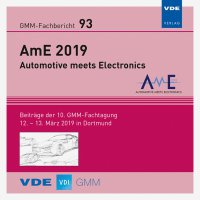Innovative Solder Materials for Achieving Highly Reliable Solder Joints
Conference: AmE 2019 – Automotive meets Electronics - 10. GMM-Fachtagung
03/12/2019 - 03/13/2019 at Dortmund, Deutschland
Proceedings: AmE 2019 – Automotive meets Electronics
Pages: 6Language: englishTyp: PDF
Personal VDE Members are entitled to a 10% discount on this title
Authors:
Karch, Andreas (Regional Technical Manager Germany, Austria, and Switzerland; Indium Corporation)
Abstract:
The requirements in the field of power electronics, in particular for IGBT power modules, are changing dramatically. This is mainly due to the altered conditions in which these modules need to function reliably. For example, the new automotive requirements for power density, shape, and weight, combined with environmental conditions, have resulted in completely modified product profiles. Inverter modules were traditionally installed in enclosure systems and exposed to air conditioning. Now, these units can be found sitting on the drivetrains of hybrid vehicles and connected to water cooling systems. A closer look at the market for automotive power electronics assemblies reveals two significant trends: the first is extremely rapid growth with a very short time-to-market; and the second is really strong cost and efficiency pressures on each individual module. The rapid growth forecasted for the automotive market can be clearly seen today, especially in the segment of the “micro- or mild-hybrid” vehicles. Here, additional electrical power is often effectively coupled to the existing combustion engine through the use of an additional 48-volt car electrical system, in order to achieve a reduction in CO² emissions through, for example, start-stop systems (idle stop start). Current forecasts in this car market sector also predict a strong increase in Hybrid Electric Vehicles (HEV), which typically use IGBT-based high-voltage systems. In the current design of these IGBT power modules for automotive applications, high-performance materials are used to ensure the reliability required of these devices. Typically, aluminum nitride (AlN) is found on the substrate side and aluminum SiC (AlSiC) on the baseplate side. This material pairing is used to minimize the CTE mismatch (disproportion of the coefficient of thermal expansion) and, therefore, reduce thermo-mechanical stress at the solder joints. The integrity of these large-area solder connections to the baseplate (heat-sink for cooling) must be guaranteed over the entire calculated lifetime of the module. A deterioration of the thermal resistance (RtH) already limits the performance of the module and, at the same time, accelerates the aging process. Therefore, it is of essential importance to strengthen these solder joints by using new innovative solder materials to increase reliability and/or to use even more cost-effective material pairings. The InFORMS(r) technology provides a composite material that can be processed as part of standard established soldering operations as a drop-in solution utilising existing equipment.


